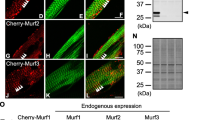Abstract
Cultured chick heart muscle cells degrade ATP during metabolic inhibition via ADP to AMP. Whether AMP is primarily deaminated to IMP or dephosphorylated to adenosine depends on the ‘metabolic block’ (glycolysis vs. oxidative phosphorylation). Inhibition of glycolysis (deoxyglucose) results in an inosine/adenosine ratio > 1 in the supernatant, whereas the nucleoside ratio is ≤ 1 during inhibition of oxidative phosphorylation (hypoxia, rotenone). EHNA, a blocker of adenosine deaminase, has little effect on inosine release during metabolic inhibition, consistent with the reported low activity of adenosine deaminase in cardiac muscle cells. The amount of adenosine and inosine released can be largely attenuated by two nucleoside carrier inhibitors, nitrobenzyl-thioinosine and dipyridamole, which suggests that nucleosides are produced intracellularly and subsequently released. These results indicate that the amount of inosine or adenosine released from the cardiomyocyte during impaired energy metabolism (e.g. ischemia) can be controlled by the metabolic state of the cell.
Similar content being viewed by others
References
Jennings RB, Steenbergen C: Nucleotide metabolism and cellular damage in myocardial ischemia. Ann Rev Physiol 47: 727–749, 1985
Buderus S, Siegmund B, Spahr R, Krutzfeld A, Piper HM: Resistance of endothelial cells to anoxia-reoxygenation in isolated guinea pig hearts. Am J Physiol 257; H488-H493, 1989
Nees S: The adenosine hypothesis of metabolic regulation of coronary flow in the light of newly recognized properties of the coronary endothelium. Z Kardiol 78 (Suppl.): 42–49, 1989
Dow JC: Metabolism of purines by adult cardiomyocytes. In: HM Piper and G Isenberg (eds.) Isolated Adult Cardiomyocytes. CRC Press Inc, Boca Raton, 1989, pp 215–238
Geisbuhler T, Altschuld RA, Trewyn RW, Ansel AZ, Lamka K, Brierley GP: Adenine nucleotide metabolism and compartmentalization in isolated adult rat heart cells. Circ Res 54: 536–546, 1984
Bowditch J, Nigdikar S, Brown AK, Dow JW: 5′-nucleotidase activity of isolated mature rat cardiac myocytes. Biochim Biophys Acta 845: 21–26, 1985
Bowditch J, Brown AK, Dow JW: Accumulation and salvage of adenosine and inosine by isolated mature cardiac myocytes. Biochim Biophys Acta 844: 119–128, 1985
Bukoski RD, Sparks HV: Adenosine production and release by adult rat cardiocytes. J Mol Cell Cardiol 18: 595–605, 1986
Ford DA, Rovetto MJ: Rat cardiac myocyte adenosine transport and metabolism. Am J Physiol 252: H54-H63, 1987
Altschuld RA, Gamelin LM, Kelley RE, Lambert MR, Apel LE, Brierley GP: Degradation and resynthesis of adenine nucleotides in adult rat heart myocytes. J Biol Chem 262: 13527–13533, 1987
Hohl CM, Winscatt DK, Brierley GP, Altschuld RA: IMP production by ATP-depleted adult rat heart cells. Effects of glycolysis and al-adenergic stimulation. Circ Res 65: 754–760, 1989
Zoref-Shani E, Kessler-Icekson G, Wasserman L, Sperling O: Characterization of purine nucleotide metabolism in primary rat cardiomyocyte cultures. Biochim Biophys Acta 804: 161–168, 1984
Meghji P, Holmquist CA, Newby AC: Adenosine formation and release from neonatal-rat heart cells in culture. Biochem J 229: 799–805, 1985
Zoref-Shani E, Kessler-Icekson G, Sperling O: Pathways of adenine nucleotide catabolism in primary rat cardiomyocyte cultures. J Mol Cell Cardiol 20: 23–33, 1988
Vemuri R, DeJong JW, Hegge JAJ, Huizer T, Heller M, Pinson A: Studies on oxygen and extracellular fluid restrictions in cultured heart cells: high energy phosphate metabolism. Cardiovasc Res 23: 254–261, 1989
Meghji P, Rubio R, Berne RM: Intracellular adenosine formation and its carrier-mediated release in cultured embryonic chick heart cells. Life Sciences 43: 1851–1859, 1988
Murphy E, LeFurgey A, Lieberman M: Biochemical and structural changes in cultured heart cells induced by metabolic inhibition. Am J Physiol 253: C700-C706, 1987
LeFurgey A, Murphy E, Wagenknecht B, Ingram P, Lieberman M: Structural, biochemical and elemental correlates of injury in cultured cardiac cells. In: G Fiskum (ed.) Cell Calcium Metabolism. Plenum Press, New York, 1989, pp 571–580
Blondel B, Roijen I, Cheneval JP: Heart cells in culture: a simple method for increasing the proportion of myoblasts. Experientia 27: 356–358, 1971
Hull-Ryde EA, Lewis WR, Veronee CD, Lowe JE: Simple step gradient elution of the major high-energy compounds and their catabolites in cardiac muscle using high-perform ance liquid chromatography. J Chromatogr 377: 165–174, 1986
Lowry OH, Rosebrough NJ, Faber AL, Randell RJ: Protein measurement with the Folin phenol reagent. J Biol Chem 193: 265–275, 1951
Boehm M: Kardiale Wirkungen von Adenosin. Klin Wochenschr 65: 487–499, 1987
Hoffmeister HM, Betz R, Fiechtner H, Seipel L: Myocardial and circulatory effects of inosine. Cardiovasc Res 21: 65–71, 1987
Itoh R, Oka J: Evidence for existence of a cytosol 5′-nucleotidase in chicken heart: comparison of some properties of heart and liver enzymes. Comp Biochem Physiol 81B: 159–163, 1985
Itch R, Oka J, Ozasa H: Regulation of rat heart cytosol 5′-nucleotidase by adenylate energy charge. Biochem J 235: 847–851, 1986
Henderson JF, Brox L, Zombor G, Hunting D, Lomax CA: Specificity of adenosine deaminase inhibitors. Biochem Pharmacol 26: 1967–1972, 1977
Hoerter JA, Lauer C, Vassort G, Gueron M: Sustained function of normoxic hearts depleted in ATP and phosphocreatine: a 31P-NMR study. Am J Physiol 255: C192-C201, 1988
Author information
Authors and Affiliations
Rights and permissions
About this article
Cite this article
Wagenknecht, B., Lieberman, M. Adenine nucleotide degradation in cultured chick heart muscle cells. Mol Cell Biochem 107, 119–125 (1991). https://doi.org/10.1007/BF00225515
Received:
Accepted:
Issue Date:
DOI: https://doi.org/10.1007/BF00225515




